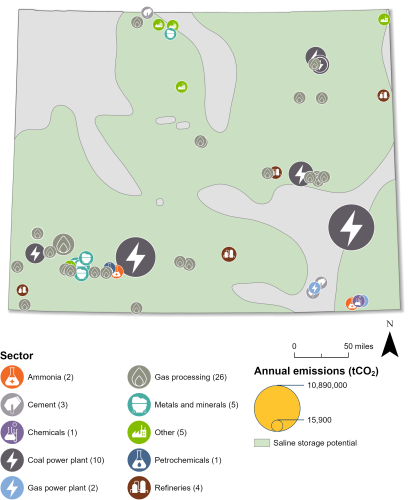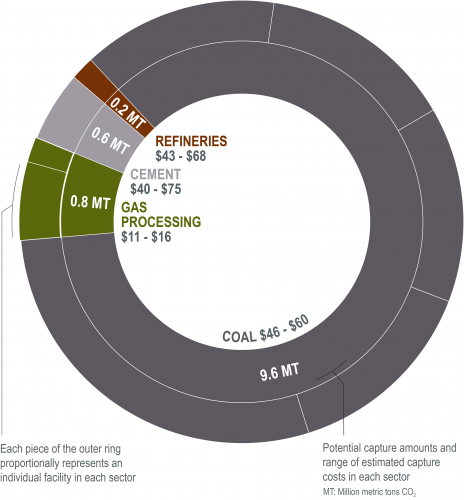Wyoming Carbon Capture Opportunities

Industrial Facilities that Qualify for the Tax Credit
Wyoming is one of the largest emerging hubs for CO2 pipeline infrastructure and projects, serving not just Wyoming, but linking to Colorado and Montana. As such, Wyoming is strategically positioned to become both a major source of CO2 captured from industrial facilities and power plants, as well as a hub for the beneficial use and geologic storage of captured carbon.
Ranked first among states in the production of coal and eighth in crude oil production, while also containing 23 facilities eligible for the newly reformed and expanded federal 45Q tax credit, Wyoming has immense opportunity for the deployment of carbon capture technology and enhanced oil recovery (EOR) to lower carbon emissions and transform captured carbon into an economic resource.
As one of the first states to enact legislation on carbon capture utilization and storage, Wyoming now has among the most comprehensive carbon capture incentives and legislation in the nation. Uniquely among states, Wyoming also developed a pipeline corridor initiative to facilitate the development of statewide and regional infrastructure for the transport and management of CO2. With a supportive tax structure, comprehensive legislation, and geologic potential, Wyoming is projected to continue as a leader in carbon capture policy development and project deployment.


Economically Feasible Industries in Wyoming
The Regional Carbon Capture Deployment Initiative estimated theoretical capture costs based on published capture equipment costs, facility-specific operational patterns, existing equipment, and level of emissions. Based on that data, the graphic below displays several of Wyoming’s most likely economically feasible candidates for capture, along with estimated capturable emissions in million metric tons and estimated range of capture costs for facilities in each industry. This list is not meant to be definitive. Commercial decisions by participating companies and policy and regulatory decisions by state governments will ultimately determine if a project is feasible for carbon capture. “Captured Emissions” refers to the amount of CO2 that can be expected to be captured at a facility considering relevant technological and economic constraints.


